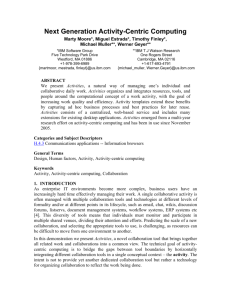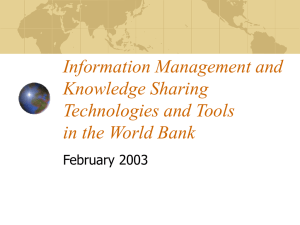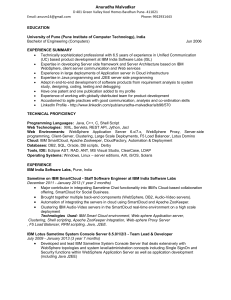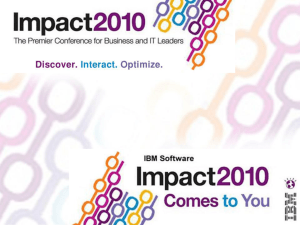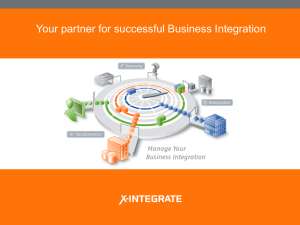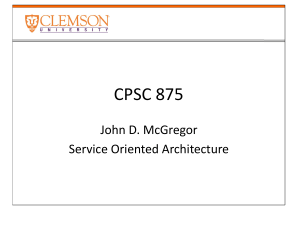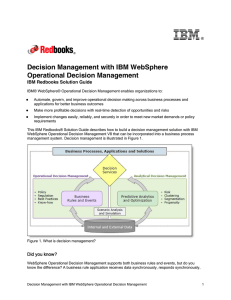Business Drivers
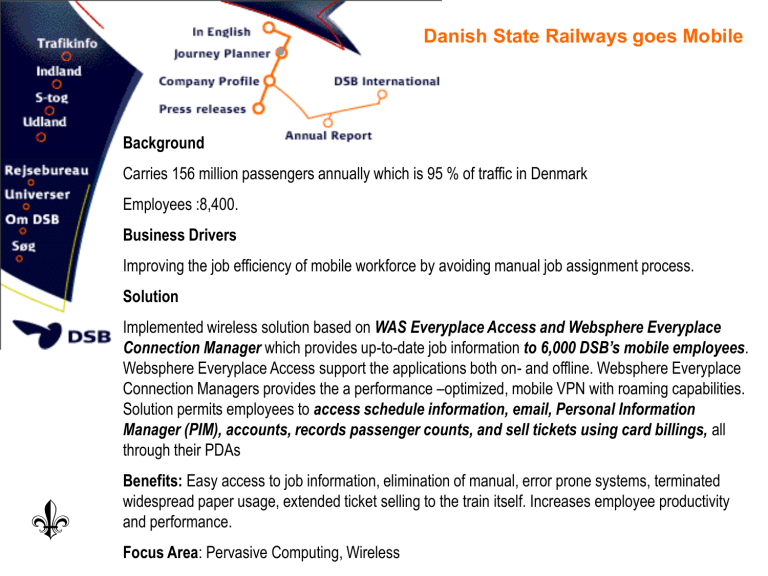
Danish State Railways goes Mobile
Background
Carries 156 million passengers annually which is 95 % of traffic in Denmark
Employees :8,400.
Business Drivers
Improving the job efficiency of mobile workforce by avoiding manual job assignment process.
Solution
Implemented wireless solution based on WAS Everyplace Access and Websphere Everyplace
Connection Manager which provides up-to-date job information to 6,000 DSB’s mobile employees.
Websphere Everyplace Access support the applications both on- and offline. Websphere Everyplace
Connection Managers provides the a performance –optimized, mobile VPN with roaming capabilities.
Solution permits employees to access schedule information, email, Personal Information
Manager (PIM), accounts, records passenger counts, and sell tickets using card billings, all through their PDAs
Benefits: Easy access to job information, elimination of manual, error prone systems, terminated widespread paper usage, extended ticket selling to the train itself. Increases employee productivity and performance.
Focus Area: Pervasive Computing, Wireless
Ministry of Railways, China Republic enables an Enterprise wide BI Solutions
Background
Largest state-owned enterprises in the Peoples Republic of China with significant investments in IT, automating many of the transactions for both freight and passenger railway operations
Business Drivers
To integrate the different silos of database like Oracle, DB2, Sybase, SQL Server together into an organization wide
BI platform in order to transform data into a comprehensive decision making resource. Aim was to improve transport management, optimized resource assignment, and to respond quickly to variable capacity.
Solution
Implemented DB2 Information Integrator enables an enterprise wide BI platform to integrate disparate database source and unstructured data. DB2 II created an intermediary store for ETL process.
Benefits: Improves operational efficiency, market responsiveness, and overall quality of transport management system. Users get a complete and realtime view of business information by greatly improving the accuracy of their business and time-to-market decisions.
Focus Area: Information Integration and Business Intelligence
DEUTSCHE BAHN AG IMPROVES PRODUCTIVITY
USING COLLABORATION
Background
Germany’s largest rail transportation provider and leading train operator in Germany with 280,000 employees
Business Drivers
To provide messaging, calendaring and real time collaboration to 55,000 employees
Solution
Implemented IBM state-of-art technology product solution from Lotus Notes and Domino along with Lotus Sametime with centralized architecture on IBM mainframe.
Benefits
Ensures higher availability, easier administration which translates to lower operating costs and greater productivityboth for the end user and the IT staff. The Lotus Notes and Domino environment – made the business operation exceptionally stable. Similarly, Lotus Sametime enhanced people productivity and reduced travel cost due to real time collaboration function.
Focus Area: Messaging and Real time Collaboration
Background
Canadian National Railroad is North Americas’ leader in Rail Transportation
Operating in 8 Canadian and 14 US States and is the only railroad to cross the continent N-S, E-W.
Business Drivers
To identify Operational savings and to determine where CN should invest strategically over a longer period of time.
CN requested that IBM Global Services - Integrated Technology Services (ITS) help identify opportunities and then build an investment road map for the future
Solution
In 12 Weeks, IBM ITS / BCS Team studies the 6 major IT infrastructure domains, IBM identified issues and provided alternatives and plans to implement change in the following :
Infrastructure Challenges Process Challenges Network Challenges
Application Challenges
Benefits
Business/IT Alignment Challenges Organization Challenges
The study helped the customer confirm what its existing strengths were as well as provided a detailed road map for future investments. IBM helped CN release potential of US$2 to 4 million annual savings opportunity in the application development area and three to 13 percent savings in the IT process area.
